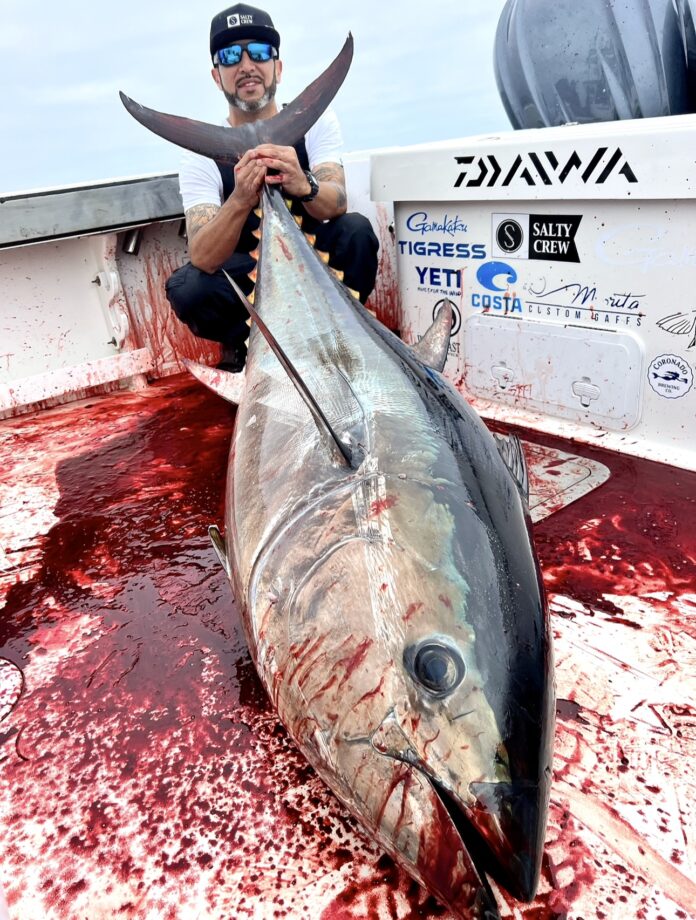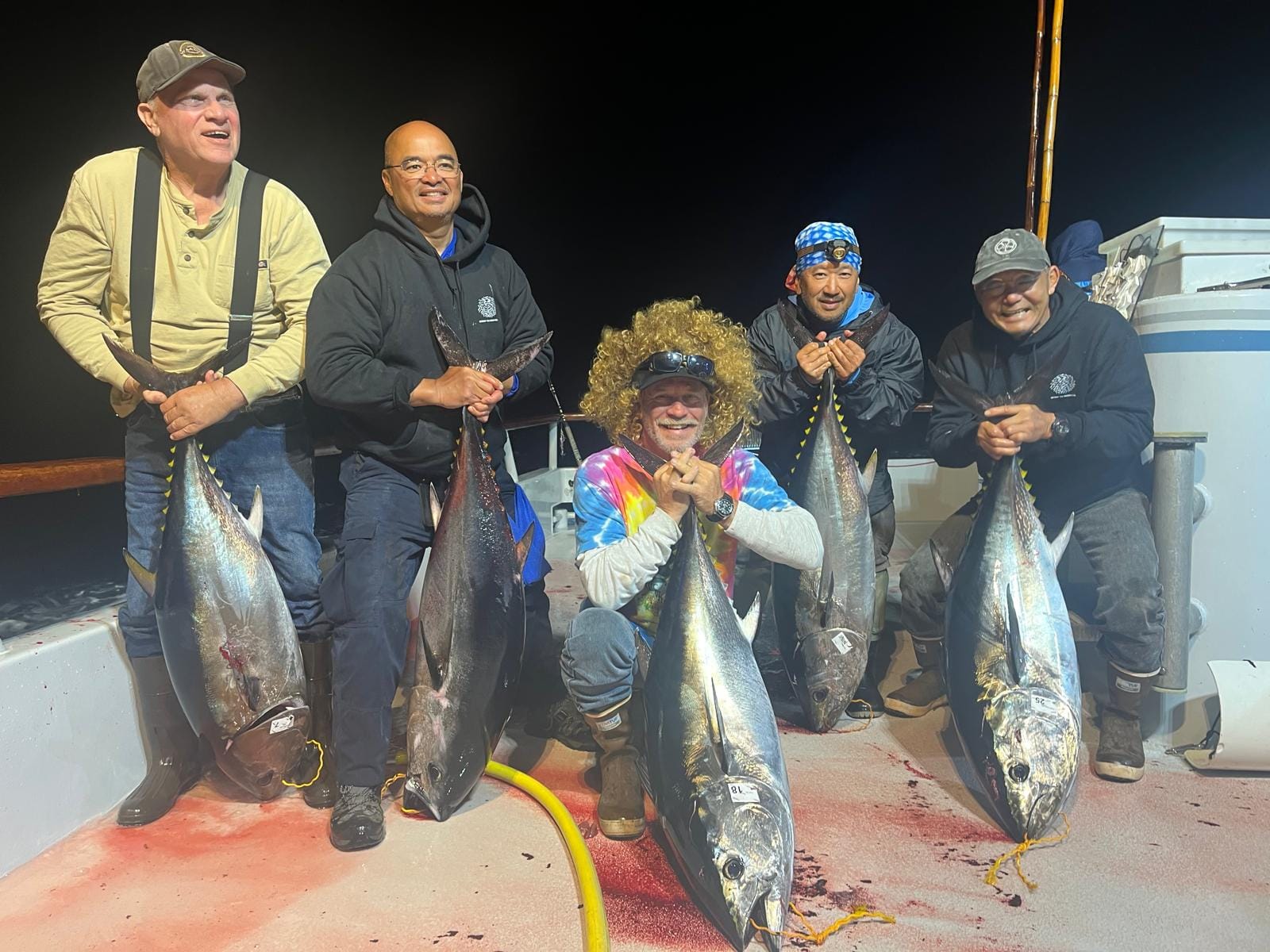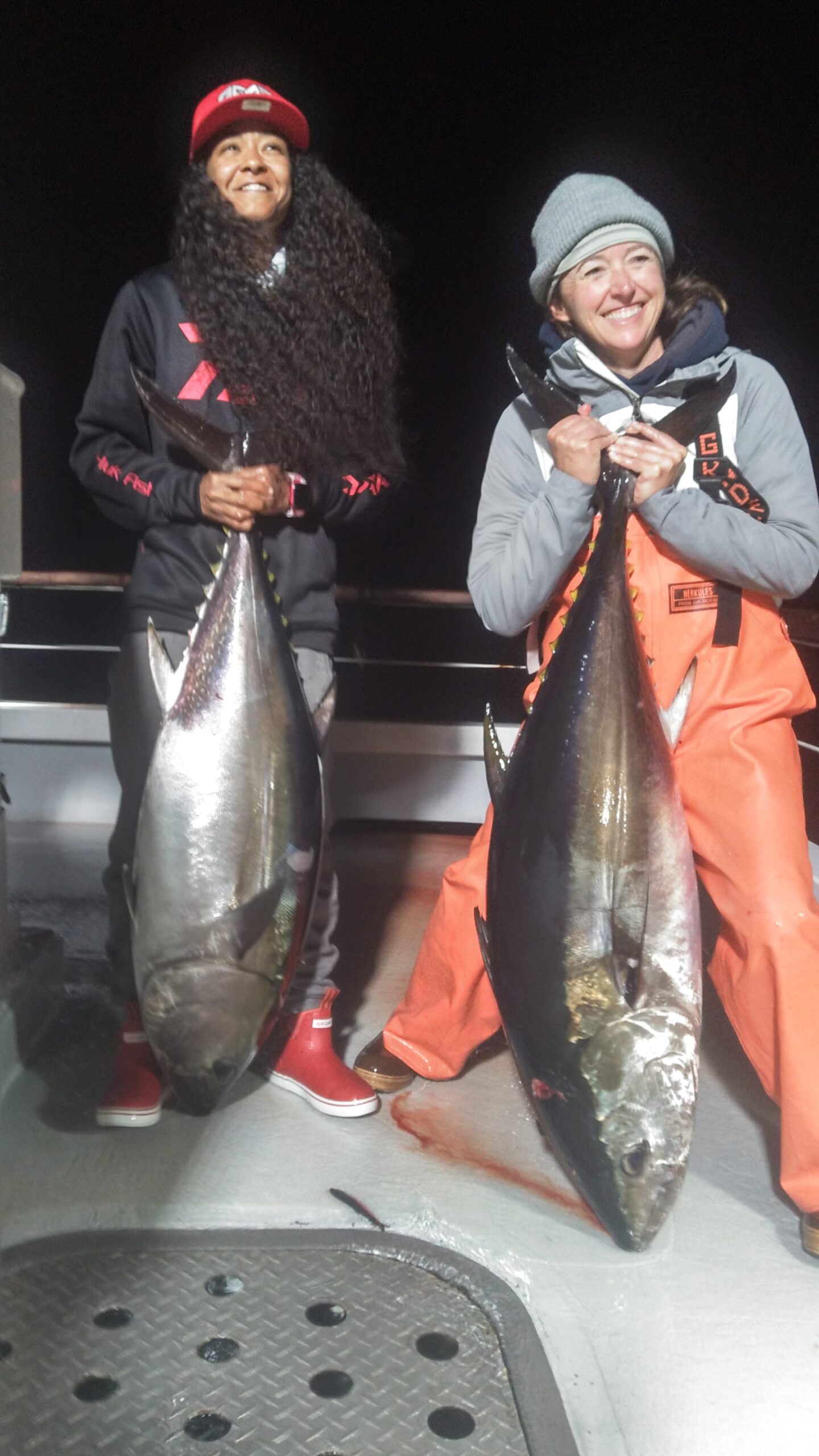
BY MERIT McCREA
SAN DIEGO — At the recent June meeting of the Pacific Fisheries Management Council the most recent stock assessment for Pacific bluefin tuna was presented as a preview. While still in draft form pending approval by the International Scientific Committee for Tuna and Tuna-like Species in the North Pacific Ocean (ISC) the Executive Summary showed the Pacific bluefin tuna population back at target levels (PBFT). Just 15 years ago Pacific bluefin biomass was estimated to be just a tenth of that target and only slightly more than 2% of their un-fished biomass.
Pacific bluefin spawn off the coast of Asia and a fraction of the young tuna migrate across the Pacific to our coasts where they forage and grow as juveniles for up to 6 or 7 years. As they mature at a weight of over 300 pounds they return west.
Off Asia they attain weights of 700 to over 1,000 pounds as adults.
The Executive Summary begins with a catch history, explaining the earliest data comes from Japan in the early 1800s, with the earliest U.S. records date from the early 1900s, yet the first consistent records start in the early 1950s.
They estimate catches peaked around 1935 at about 47,635 tons, roughly 36,217 tons in the Western Pacific off Japan and 11,418 in the Eastern Pacific. Catches dropped dramatically during WW II and peaked again around 40,383 tons in 1956, but by 1990 had again fallen to just 8,653 in 1990.
In 2015 Regional Fisheries Management Organizations fishing restrictions became much stricter as the PBFT population fell to its nadir. Since then these fast growing fish rebounded in number and size. Much of this re-growth had to do with curtailing a previously expanding fishery in Japan that targeted the young bluefin before their first year.

Among nations, Japan harvests by far the largest fraction, with Mexico coming in a very weak second, followed by Taiwan and then the U.S. and Korea.
Assessors estimate the optimum yield biomass for BFT to be about 20% of what that biomass would be without fishing. In the current stock assessment the model estimates the PBFT biomass at 23.3% of unfished, at about 144,483 tons within a wide range from about 90,000 tons to 200,000 tons.
This is all great news for the fish and for fishers.
In the future nations may be looking to liberalize group-imposed international catch limits. A larger bag limit would be nice, but having seiners pushing the fish around later in the year wouldn’t. When the seiners are out and about, getting bluefin schools to respond and bite can be difficult.

Currently the purse seine fleet of Mexico gets their quota of PBFT quickly. In U.S. waters seiners no longer target bluefin much, but instead hold their small bluefin quota to support targeting of yellowfin while allowing for an incidental take of bluefin.
Managed in 2-year cycles, last year the U.S. commercial fleet did not come close to catching all they were allowed. This year a fraction of that savings will add to what’s available to the commercial sectors.
The commercial price paid to U.S. commercial hook-and-line fishermen is around $5 to $6 per pound for fresh, never frozen fish.



